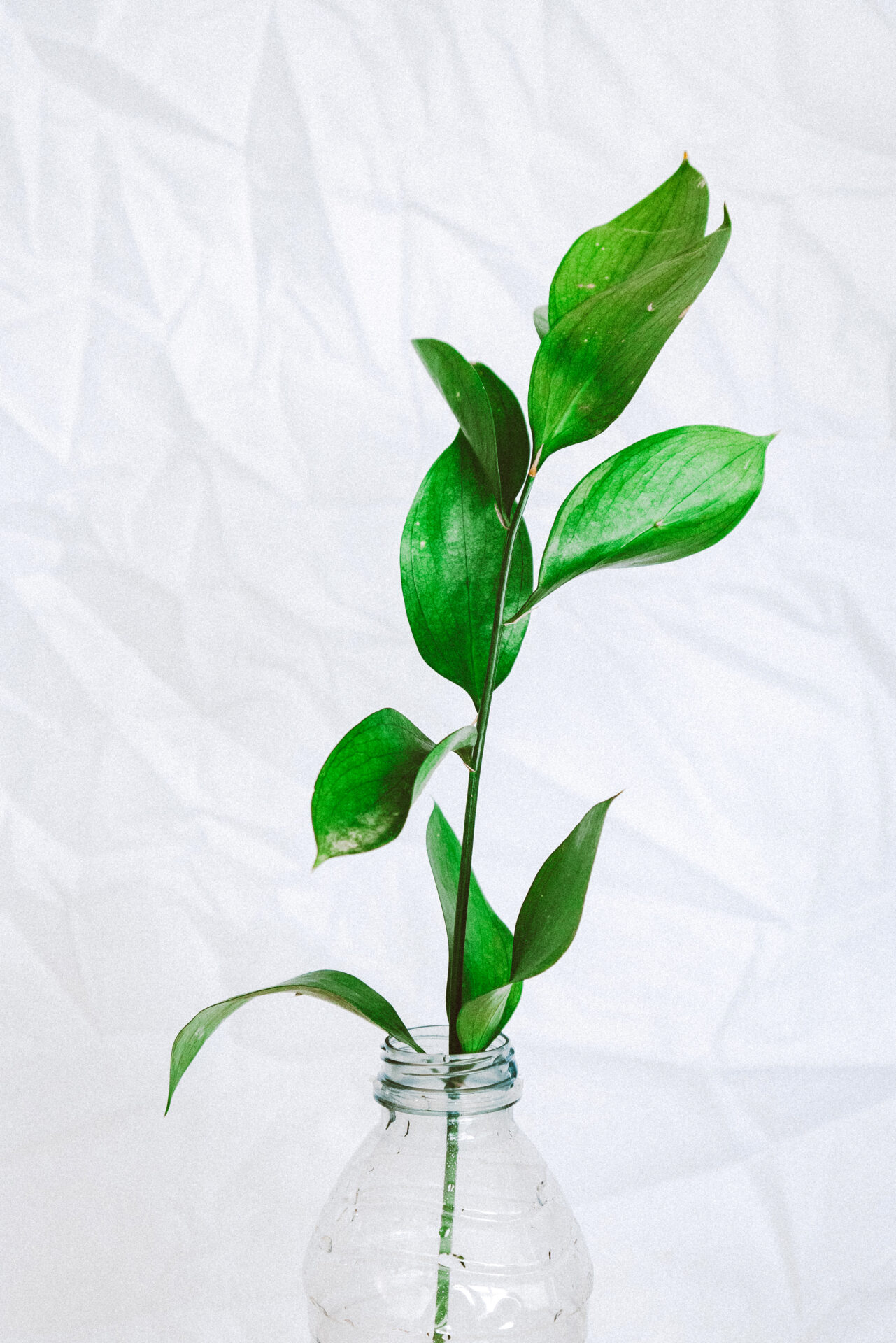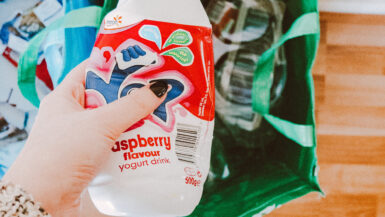As we become increasingly aware of the environmental impact of plastic waste, the concept of plastic-free living has gained significant traction. One area where we can make a considerable difference is in our home decor choices. In this article, we will explore sustainable and eco-friendly alternatives to plastic-based decorations, focusing on how to create your own plastic-free home decor. We will delve into the benefits of selecting environmentally friendly materials, provide practical tips on sourcing and repurposing items, and offer creative ideas for designing unique and stylish decorations that are kind to our planet. By the end of this comprehensive guide, you will be well-equipped to transform your living space into a plastic-free haven, showcasing your commitment to environmental responsibility and sustainable living.
DIY Eco-Friendly Wall Art Ideas for a Sustainable Home
Designing a sustainable and plastic-free home goes beyond the use of eco-friendly and natural materials in furniture and other functional items. Wall art and decorations play a significant role in defining the overall aesthetics of our living spaces. By opting for DIY eco-friendly wall art, you can not only reduce your plastic consumption but also unleash your creativity and add a personal touch to your home. In this subsection, we will explore some innovative and environmentally conscious ideas for creating your very own plastic-free wall art.
Transform Reclaimed Wood into Rustic Art Pieces
Reclaimed wood, with its natural imperfections and unique character, can be an excellent material for creating one-of-a-kind wall art. Salvaged from old barns, pallets, or discarded furniture, this eco-friendly option helps reduce deforestation and waste. Use your artistic skills to paint or carve designs onto the wood, or arrange multiple pieces into an eye-catching geometric pattern. The possibilities are endless, and the result will be a beautiful, rustic addition to your home.
Create a Living Wall with Indoor Plants
Inject life and vibrancy into your living spaces by crafting a living wall using indoor plants. This green alternative not only adds color and texture to your home but also improves air quality and acts as a natural air purifier. Choose various plant species that thrive in low-light conditions and arrange them in aesthetically pleasing patterns on your wall. You can use recycled materials like old picture frames or wooden boxes as planters for an added eco-friendly touch.
Repurpose Old Textiles into Modern Wall Hangings
Breathe new life into old textiles by turning them into contemporary wall hangings. Whether it’s a vintage scarf, a family heirloom, or a piece of fabric with a striking pattern, these textiles can be easily framed or stretched over a wooden frame to create stunning wall art. In addition to reducing waste, repurposing old textiles allows you to preserve memories and add a sentimental touch to your home.
Upcycle Old Maps and Books into Unique Collages
Old maps and books offer endless possibilities for creating distinctive and conversation-starting wall art. Cut out interesting shapes, illustrations, or text from these materials and arrange them into intricate collages. By upcycling these items, you not only prevent them from ending up in landfills but also give them a new lease on life as eye-catching decorations.
Assemble a Gallery Wall with Thrifted Frames and Art
A gallery wall is an excellent way to showcase your artistic taste and style while staying eco-friendly. Collect an assortment of thrifted frames, mirrors, and art pieces, and arrange them into a cohesive composition on your wall. Opt for second-hand items made from sustainable materials like wood, metal, or glass to avoid plastic. This eclectic display will add visual interest to your home and serve as a testament to your commitment to sustainable living.
By embracing these creative and eco-friendly wall art ideas, you can make a significant impact on reducing plastic waste and contribute to a healthier planet. Moreover, you will be able to showcase your personal style and create a home that reflects your values and commitment to sustainable living.
Upcycling Household Items into Stylish Plastic-Free Decor
Transforming everyday household items into chic and sustainable decor is a fantastic way to reduce waste, save money, and personalize your living space. In this subsection, we will explore various upcycling ideas that can help you create stylish and plastic-free home decorations. From repurposing kitchen utensils to breathing new life into old furniture, these innovative projects will inspire you to see the hidden potential in objects you might have otherwise discarded.
Turn Mason Jars into Charming Vases and Planters
Mason jars are versatile and eco-friendly containers that can be easily repurposed into attractive vases and planters. Simply clean the jars thoroughly, then paint or decorate them to match your home’s decor. Fill the jars with fresh flowers, succulents, or herbs for an instant pop of color and life.
Repurpose Old Ladders into Functional Shelves
An old wooden ladder can be effortlessly transformed into a unique and functional shelving unit. Lean the ladder against a wall, and secure it with brackets for stability. Add wooden planks or repurposed materials to create shelves, and display your favorite books, plants, or decorative items on this rustic and charming piece.
Create Unique Lighting Fixtures from Salvaged Materials
Breathe new life into discarded objects by turning them into one-of-a-kind lighting fixtures. Old colanders, metal baskets, or even mason jars can be converted into stylish pendant lights or lampshades. With a little creativity and some basic electrical skills, you can create a statement piece that adds warmth and character to your home.
Transform Wine Corks into Artful Bulletin Boards
Instead of discarding wine corks, upcycle them into a functional and attractive bulletin board. Arrange the corks in a pattern of your choice, and secure them onto a wooden or cardboard backing. Hang the finished board in your kitchen or office to pin notes, reminders, or cherished memories.
Revamp Old Furniture with a Fresh Coat of Paint
Give outdated or worn-out furniture a fresh look by painting or refinishing it. A new coat of paint or stain can completely transform a piece, making it the perfect addition to your plastic-free home. Experiment with bold colors, patterns, or even chalk paint to create a customized, eco-friendly centerpiece for your living space.
Embracing upcycling projects not only allows you to create unique and personalized home decor, but it also contributes to a more sustainable lifestyle. By reusing and repurposing household items, you can significantly reduce waste and plastic consumption, making a positive impact on the environment while showcasing your creativity and resourcefulness.
Crafting Natural Fiber Textiles for a Cozy, Plastic-Free Space
Incorporating natural fiber textiles into your home decor is an excellent way to create a cozy and comfortable atmosphere while reducing your reliance on plastic-based materials. These eco-friendly alternatives not only have a smaller environmental footprint but also offer unique textures and patterns that can elevate the aesthetics of your living space. In this subsection, we will explore various ways to create and use natural fiber textiles in your home, from hand-weaving your own fabrics to selecting the perfect sustainable rugs and throws.
Hand-weaving Fabrics Using Sustainable Materials
One rewarding way to create plastic-free textiles for your home is by learning the art of hand-weaving. This traditional craft allows you to create unique and customized fabrics using sustainable materials such as cotton, linen, hemp, or even bamboo. Start by acquiring a basic weaving loom and experimenting with different weaving techniques to create a range of patterns and textures. The resulting handwoven textiles can be used for decorative wall hangings, pillow covers, or table runners that add a personal and eco-friendly touch to your home.
Choosing Ethically Sourced and Sustainable Rugs
Rugs made from natural fibers not only bring warmth and softness underfoot but also contribute to a healthier indoor environment, as they are typically free of harmful chemicals and synthetic materials. When selecting a rug for your home, look for options made from sustainable materials such as jute, sisal, or organic wool. Additionally, choose rugs that have been ethically sourced and produced, ensuring that your purchase supports fair labor practices and environmentally responsible manufacturing.
Adding Comfort with Organic Cotton and Linen Throws
Organic cotton and linen throws are a great way to add a layer of warmth and comfort to your living space while maintaining a plastic-free environment. These natural fibers are not only soft and durable but also biodegradable, making them a more eco-friendly choice than synthetic alternatives. Opt for throws made from organic materials that have been grown without the use of harmful pesticides or chemicals, and ensure that they have been dyed using natural or low-impact dyes to minimize their environmental impact.
Creating a Cozy Bedroom with Sustainable Bed Linens
Your choice of bed linens can also play a significant role in creating a plastic-free home. Look for sheets, pillowcases, and duvet covers made from natural fibers like organic cotton, linen, or eucalyptus-based Tencel. These materials not only offer a luxurious and comfortable sleeping experience but are also kinder to the planet. Ensure that the linens you choose are produced using sustainable practices, such as water-saving manufacturing methods and fair labor standards.
Experimenting with DIY Textile Projects
Finally, don’t be afraid to get creative with your own DIY textile projects. Whether it’s sewing your own reusable produce bags from natural fabric or crafting homemade beeswax wraps as an alternative to plastic wrap, there are countless ways to incorporate sustainable textiles into your daily life. These projects not only help reduce your plastic consumption but also allow you to express your creativity and passion for eco-friendly living.
By embracing natural fiber textiles in your home decor, you can create a warm and inviting atmosphere that reflects your commitment to sustainability and plastic-free living. Through hand-weaving, selecting ethically sourced rugs, and incorporating organic throws and bed linens, you can make a tangible difference in reducing your environmental impact while enjoying the unique beauty and comfort that these materials offer.
Creating Reclaimed Wood Furniture for a Rustic, Eco-Friendly Touch
Introducing reclaimed wood furniture into your home is an excellent way to add a rustic charm while contributing to a more sustainable and plastic-free environment. Reclaimed wood, often sourced from old barns, pallets, or discarded furniture, can be repurposed into a variety of functional and aesthetically pleasing pieces. In this subsection, we will explore some creative ideas for crafting your own reclaimed wood furniture, and provide tips for sourcing and working with this eco-friendly material.
Designing a Reclaimed Wood Coffee Table
A coffee table made from reclaimed wood can serve as a stunning centerpiece for your living room. Start by selecting the desired dimensions for your table and searching for suitable wood pieces that match your vision. Clean and sand the wood to remove any dirt, paint, or rough edges, then assemble the pieces using wood glue and screws. Finish the table with a coat of wood stain or paint for added protection and to enhance the natural beauty of the wood.
Building a Rustic Wooden Bench
A reclaimed wood bench can bring character and functionality to your entryway or garden. To create your bench, source sturdy wooden planks and beams, and cut them to the desired length. Assemble the pieces into a simple box or A-frame structure, then sand and clean the wood to reveal its natural texture. Apply a protective sealant or paint, and add cushions made from natural fibers for added comfort.
Creating a Custom Bookshelf from Wooden Pallets
Transform wooden pallets into a unique and practical bookshelf that showcases your favorite reads while reducing waste. Disassemble the pallets and cut the wood into the necessary lengths for your bookshelf structure. Sand and clean the wood, then assemble the pieces using brackets, screws, and wood glue. Finish the bookshelf with a coat of paint or stain that complements your home’s decor.
Upcycling an Old Door into a Stylish Headboard
Old wooden doors can be repurposed into chic and eco-friendly headboards for your bedroom. Clean and sand the door to remove any dirt, paint, or imperfections. Cut the door to the desired size and shape, then mount it to the wall or attach it to your bed frame using brackets. Enhance the headboard with a coat of paint, decorative trim, or even vintage door knobs for added flair.
Sourcing and Preparing Reclaimed Wood
When working with reclaimed wood, it is essential to source materials responsibly and to prepare them correctly before use. Check local salvage yards, construction sites, or online marketplaces for discarded wood that can be repurposed. Ensure that the wood is free of pests, mold, and chemicals before using it in your projects. Additionally, it is crucial to sand, clean, and treat the wood to ensure a safe and durable finished product.
By crafting your own reclaimed wood furniture, you can not only reduce waste and plastic consumption but also create unique pieces that tell a story and add a rustic charm to your home. Whether designing a coffee table, building a bench, or upcycling an old door, the possibilities are endless, and the result will be a stylish and eco-friendly addition to your living space.
Incorporating Indoor Plants for a Greener, Plastic-Free Living Space
Integrating indoor plants into your home decor is an excellent way to infuse your space with natural beauty, improve air quality, and reduce your reliance on plastic-based decorations. From creating a lush living wall to utilizing upcycled containers as planters, there are numerous ways to incorporate greenery into your living environment while adhering to a plastic-free lifestyle. In this subsection, we will explore various approaches to using indoor plants as environmentally friendly home decor and offer practical tips for selecting and caring for your new leafy companions.
Selecting Low-Maintenance and Air-Purifying Plants
When choosing indoor plants for your plastic-free home, opt for species that are easy to maintain and offer air-purifying benefits. Some popular options include the snake plant, pothos, and spider plant, which are known for their ability to remove toxins from the air and thrive in a variety of light conditions. By selecting these low-maintenance plants, you can create a healthier and greener living space without spending excessive time and effort on plant care.
Creating a Vertical Garden with Hanging Planters
Maximize your living space and elevate your decor by designing a vertical garden using hanging planters. Suspend plants from the ceiling or mount them on the wall to add visual interest and make the most of limited space. Choose eco-friendly materials such as natural fiber baskets, ceramic pots, or repurposed containers as planters, avoiding plastic-based options. This vertical arrangement not only adds a unique aesthetic element to your home but also showcases your commitment to sustainable living.
Upcycling Household Items into Eco-Friendly Planters
Breathe new life into discarded household items by transforming them into charming and eco-friendly planters. Old mason jars, teapots, or even wooden crates can be repurposed to house your indoor plants, reducing waste and plastic consumption. Customize these upcycled planters with paint or other decorations to match your home’s interior design, and enjoy the satisfaction of giving new purpose to once-forgotten items.
Integrating Plants into Your Workspace
Incorporate indoor plants into your home office or workspace to improve air quality, reduce stress, and create a calming environment. Place plants on your desk, bookshelves, or windowsills to introduce a touch of nature to your work area. Opt for compact plants that require minimal care, such as succulents, to ensure that your focus remains on your work while still enjoying the benefits of greenery in your space.
Curating a Plant Corner or Mini Greenhouse
Dedicate a corner of your home to creating a mini greenhouse or plant sanctuary. Assemble a collection of indoor plants that thrive in similar conditions, and arrange them on shelves, stands, or tables to create a lush and visually appealing display. This dedicated plant corner not only adds a vibrant touch to your home but also serves as a relaxing retreat where you can unwind and connect with nature.
In summary, incorporating indoor plants into your home decor is a versatile and eco-friendly way to enhance your living space while minimizing plastic consumption. By selecting low-maintenance plants, creating vertical gardens, and upcycling household items as planters, you can cultivate a healthier and more sustainable environment that aligns with your plastic-free lifestyle. Furthermore, the integration of plants into your workspace and the creation of plant corners can help to reduce stress and foster a deeper connection with the natural world.





Leave a reply